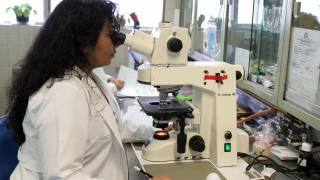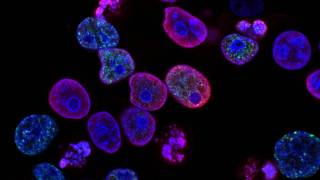HPV Found Hiding in Tonsils

What is the prevalence of human papillomavirus (HPV) in otherwise healthy adult tonsil tissue?
According to the Centers for Disease Control and Prevention (CDC), HPV is an identifiable cause of nearly all cervical cancers and is also related to most mouth, throat, and other cancers.
Diagnostic tests exist to detect HPV in people before they develop cervical cancer, but not for HPV-related head and neck cancers.
By mid-adulthood, most people have been exposed to HPV.
But research indicates that HPV-infected people have increased risk to develop mouth or throat cancer.
This data suggests immune systems can defend certain people from HPV infections.
In a new study, researchers found HPV in small pockets on the surface of tonsils. They believe HPV may be ‘hiding’ on these tonsils.
And in some cases, the virus later invades the tonsil tissue to develop cancer.
Which begs the question, why doesn't the immune system protect the five percent who develop cancer?
In this retrospective, cross-sectional study, these researchers believe the answer lies in biofilms, which are thin, slimy sheets of bacteria. They found HPV encased in biofilms inside pockets on the tonsil surface, called tonsil crypts, which is where the HPV-related head and neck cancers often originate.
Matthew Miller, M.D., associate professor of Otolaryngology and Neurosurgery at University of Rochester Medical Center (URMC) and study co-author, Katherine Reith, M.D., an Otolaryngology resident at URMC, studied tissue samples from patients who had elective tonsillectomies.
The researchers found that the overall prevalence of HPV in the tonsils was 4.9 percent.
Additionally, in every case, HPV was found in tonsil crypts biofilms.
In 102 otherwise healthy adults (55 [53.9%] female; age range, 20-39 years), the overall prevalence of HPV in tonsils was 4.9% (n = 5); and high-risk type 16 or 18, 3.9% (n = 4).
In this sample population, in situ hybridization colocalized HPV virus to the biofilm of the tonsillar crypts.
Dr. Miller’s team believes HPV is shed from the tonsil during an active infection and gets trapped in the biofilm, where it may be protected from immune attack.
In the crypts, the virus likely lays in wait for an opportunity to reinstate infection or invade the tonsil tissue to develop cancer.
The presence of latent HPV infection in tonsil tissue of healthy adults may contribute to the understanding of HPV-associated squamous cell carcinoma oncogenesis of the oropharynx.
"Given the lack of universal HPV immunization and the potential for the virus to evade the immune system even in individuals with detectable HPV in their blood, our findings could have far-reaching implications for identifying people at risk of developing HPV-related head and neck cancers and ultimately preventing them," Dr. Miller said.
The HPV vaccine can prevent up to 90 percent of all cervical cancer cases. Originally recommended for young women, HPV vaccination is now recommended by the CDC for most preteens.
During 2016, the CDC approved a two-dose schedule for adolescents under age 15 instead of the traditional three-dose schedule. Teens starting at age 15 or later still need three doses.
The Gardasil 9 vaccine immunizes against nine genotypes of HPV known to cause cervical cancer, as well as vulvar, vaginal, and anal cancers and genital warts caused by HPV.
The CDC Vaccine Price List provides the private sector vaccine prices for general information.
And vaccine discounts can be found here.
Vaccines, like any medicine, can have side effects, says the CDC. You are encouraged to report negative side effects of vaccines to the FDA or CDC.
Katherine K. S. Rieth, Steven R. Gill, Abberly A. Lott-Limbach, Mark A. Merkley, Nathalia Botero, Paul D. Allen, Matthew C. Miller did not disclose any conflicts of interest.
Our Trust Standards: Medical Advisory Committee

























